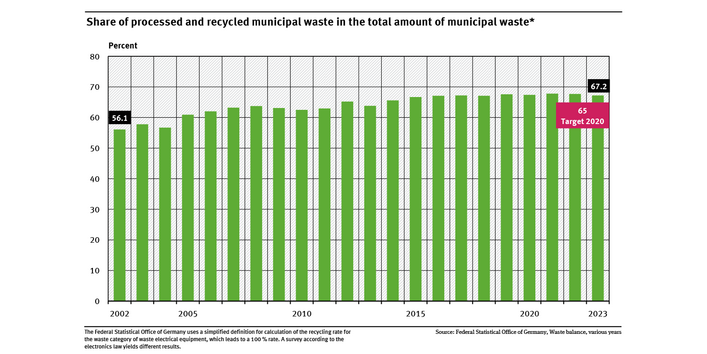Recycling of municipal waste has been at a relatively high level in Germany for a long time. In 2002 it was 56 %. Over 60 % of municipal waste has been recycled in Germany since 2005.
The 2008 EU Waste Framework Directive (Directive 2008/98/EC) has so far set the follwing recycling target: Each country must achieve a recycling rate of 50 % for certain materials by 2020. The German Federal Government has increased this requirement in the Circular Economy Act: 65 % of all municipal waste must be recycled.
The amended Waste Framework Directive (Directive 2018/851/EC) lays down the following targets for the recycling of municipal waste (including preparation for re-use) taking into account a new output-based calculation method: 55 % by 2025, 60 % by 2030 and 65 % by 2035. The European targets are currently being translated into national law of the Member States.
A clear rise in recycling rates has been observed since 2002. The recycling rate for municipal waste reached 65 % for the first time in 2012 and, after falling in 2013, exceeded this value again since 2014. The efforts to expand material recycling of municipal waste will be continued in order to raise this level further.
